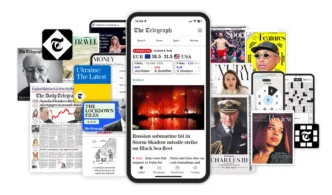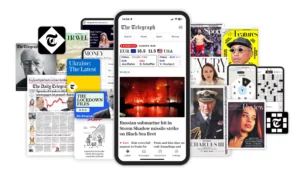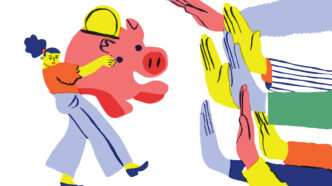
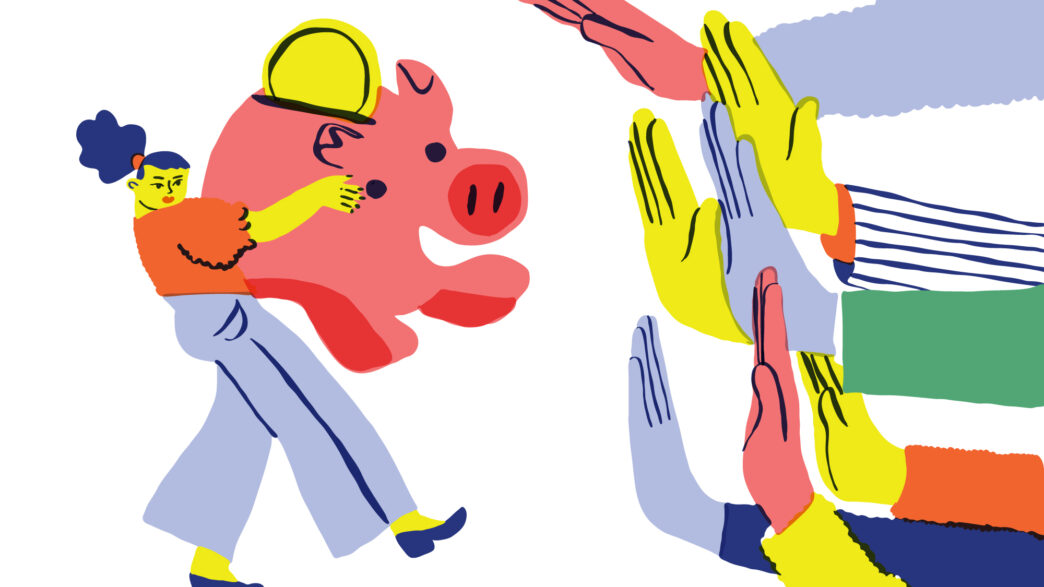
This article was written by Lennart Schneider, founder of Subscribe Now podcast & newsletter, and expert on digital subscription models.
Everything is getting more and more expensive, including subscriptions. Those who don’t adjust their prices regularly will lose revenue in the long run due to inflation. But of course, with a price increase comes churn risk. So how do you balance the two: increase revenues and retention despite price increase?
To help answer this question, I spoke to pricing expert Florian Bauer in my Subscribe Now podcast where he explained to us when you should increase prices, how to communicate this gently and why you should always offer alternatives.
Here are his 7 biggest mistakes to avoid.
Mistake 1: Rare but large price jumps
Many providers shy away from price increases and therefore postpone them. However, if prices have remained at the same level for five years, the jump has to be even bigger to at least offset inflation.
Florian likes to compare price acceptance to a muscle that needs to be trained: If you continuously improve, subscribers will follow the change, but if you want to run a marathon after 5 years without training, you will fail.
You often hear that you can and should increase prices by 10% every year. However, he doesn’t believe in such a blanket statement, because in the end, you always have to know which user situation the price increase applies to and you should understand your customers’ price psychology profile. This consists of price evaluation, price interest, and price knowledge.
Mistake 2: No alternatives
A price increase puts subscribers in an unfavorable position because it reverses the balance of power. While customers are usually king and make the decisions, here they are presented with a fait accompli. And that can lead to rejection.
Florian therefore recommends always giving subscribers options. A good example of this is Netflix. When they raised the price of their Standard subscription in 2014, they simultaneously introduced a new plan. Anyone who didn’t want to accept the price increase could downgrade from Standard to Basic for the same price. They later did something similar with the low-cost, ad-supported plans.

Another option is to offer a switch from a monthly to an annual subscription. This allows customers to keep the old price if they are willing to commit for a longer period.
Mistake 3: Detailed explanations
Have you ever received a message from a subscription provider explaining in detail that they unfortunately have to raise prices because costs have risen, subscribers are losing out, and the current economic situation is extremely difficult? I’m exaggerating a bit here, but such detailed explanations are not uncommon.
Florian strongly advises against it. Giving a reason always leaves you vulnerable. Paper prices have gone up? But then I’ll want a discount when they go down again!
Your customers don’t pay you for your costs, they pay for the benefits you provide. Therefore, the only acceptable justification for a price increase is that the benefits of your subscription justify the new price.
Furthermore, you don’t want customers to spend too much time thinking about the price increase. A lengthy explanation will encourage them to think about the price increase for a long time, rather than quickly accepting it and forgetting about it. So, focus less on communicating the reasons for the price increase and instead focus on the options the customer has and the consequences if they don’t agree to the price increase.
Mistake 4: Justifying price increases with new features
The price is rising, but you can now use new AI features? We’ve observed this phenomenon with many software providers in recent years. Here, the higher price is justified by a supposedly higher value.
The problem, however, is that many users are not interested in the new features at all, which worsens the price-performance ratio and creates frustration.
Florian thinks Spotify’s approach is smarter: Since April, you can listen to audiobooks with a Spotify subscription for up to 12 hours per month. Then in August, they raised the prices, with a Family Premium subscription rising from €17.99 to €21.99. Audiobooks don’t play a major role in communication.
There’s an interesting detail in the word “Premium”: In addition to Spotify Family Premium, there’s now also Spotify Family Basic, which still costs €17.99. And the only difference: 12 hours of audiobooks per month.
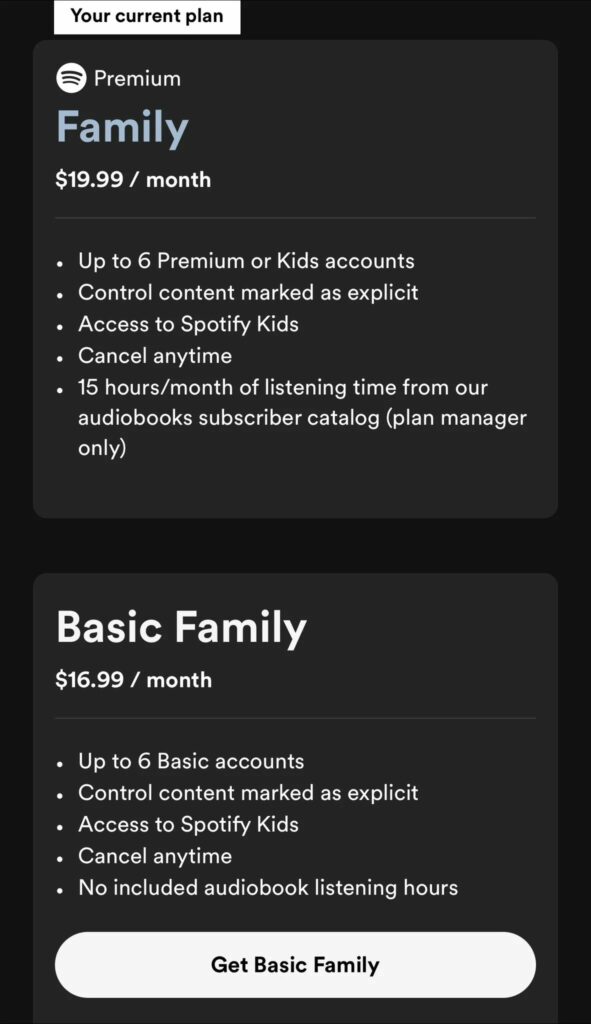
So, in effect, they increased the price of the new audiobooks, but separated the topics from each other in terms of time and communication to such an extent that most users didn’t notice.
And in addition, they offer subscribers an alternative option (see error 3): If you want to keep the old price, you can downgrade to Basic and then get exactly the same subscription you had before the audiobook feature was launched.
Mistake 5: No escalation plan
Price increases require approval in most cases. Attorney Julian Diefenbach recently explained this in my podcast. This means they cannot be implemented unilaterally or hidden in the terms and conditions.
However, the price increase often doesn’t reach your subscribers at the best possible moment (when does that ever happen?). This means they don’t have the time or inclination to deal with it and ignore your email or push notification.
Now it’s time to be persistent and keep at it. It often takes several requests before the customer agrees, and varying channels and messages can help. It’s best to create a plan for when to contact the customer, on which channel, with which request. If they don’t respond, decline, or postpone, you should be prepared and follow up promptly with a slightly adjusted request.
In later attempts, you can, for example, point out alternatives (see mistake 2) or create FOMO by showing what they will lose if they do not agree to the price increase.
You can visualize such a plan like this:
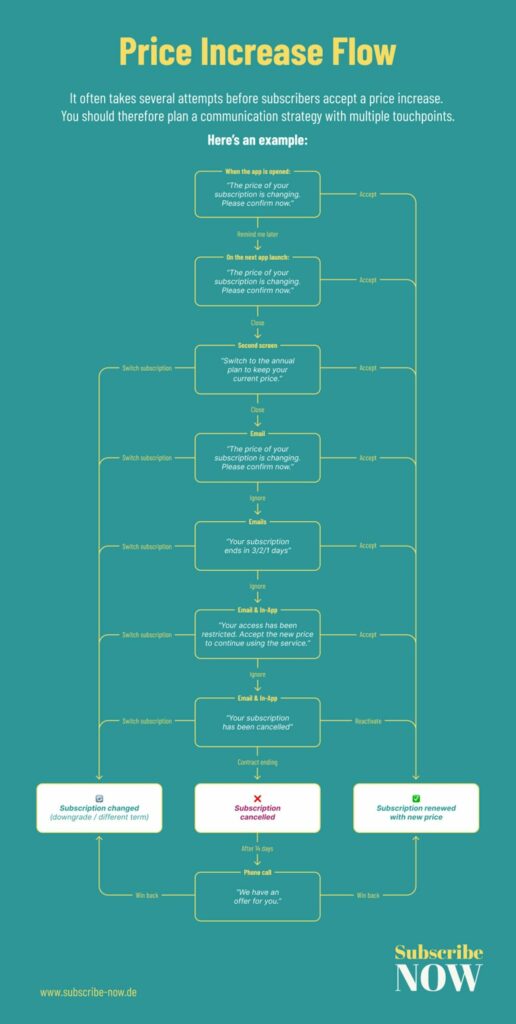
Mistake 6: Starting too late
Your users don’t want to be presented with a fait accompli. So, if you tell them their price is going up next week and they’ll lose access if they don’t agree immediately, it will trigger stress and defensive reactions.
It’s better to announce the price increase well in advance. And “much” can sometimes mean a year. Florian praises Amazon Prime’s approach of announcing price increases 12 months in advance. This allows users to mentally prepare, and at least for me, it bothers me considerably less when future Lennart has to pay more, whereas I’m considerably more annoyed when present Lennart does.
This all has a nice side effect: If customers don’t agree immediately, you have another year to obtain their consent (see mistake 5).
Mistake 7: Increasing prices equally for new and existing customers
Price increases also offer an opportunity: They can give your existing customers a reason to stay longer. If you raise their prices six to 12 months later, they’ll always get the best price—and they’ll pay more if they cancel now and come back in two months.
It’s also a sign of appreciation to be able to write in the email: “Our prices are increasing, but because you’re so important to us, this won’t affect you until 12 months from now. If you agree now, you can stay at the old price for another 12 months.”
To take full advantage of this effect, you can also incorporate it into the cancellation process, such as with the graphic design software Canva. There, the cancellation process is very transparent: “You’re currently paying €10, the price for new subscribers is €12. Do you really want to lose this price?”
So, don’t be afraid of price increases! If you approach them strategically and routinely, your subscribers will accept them (with gritted teeth). But you should start this strategy now so you don’t stumble into them again next time.









